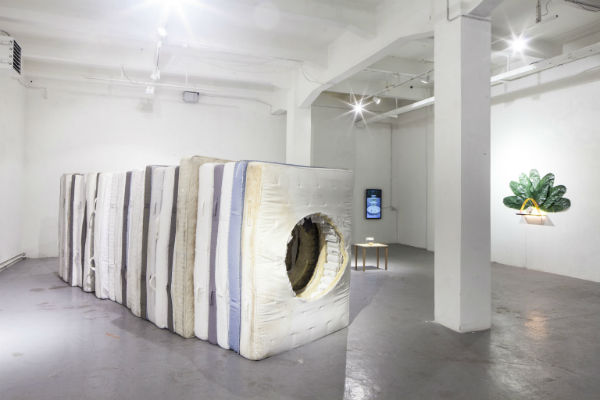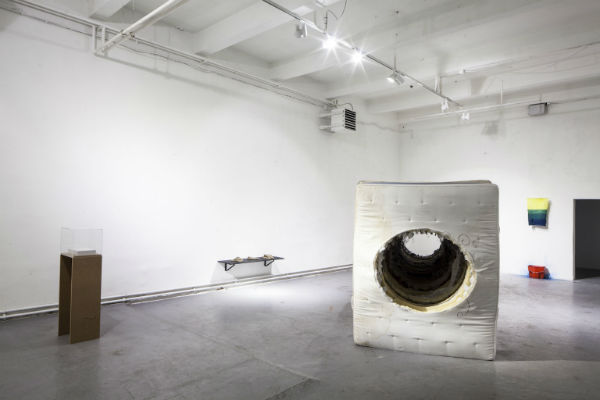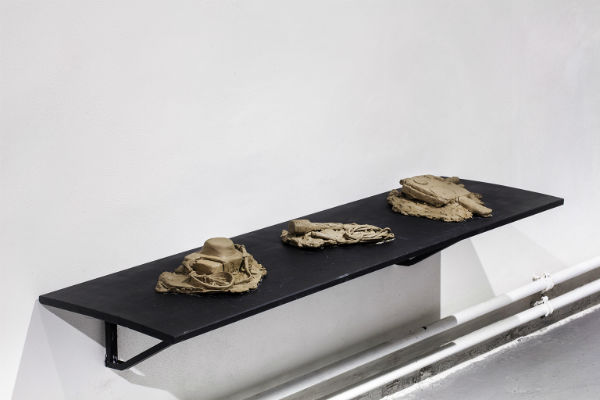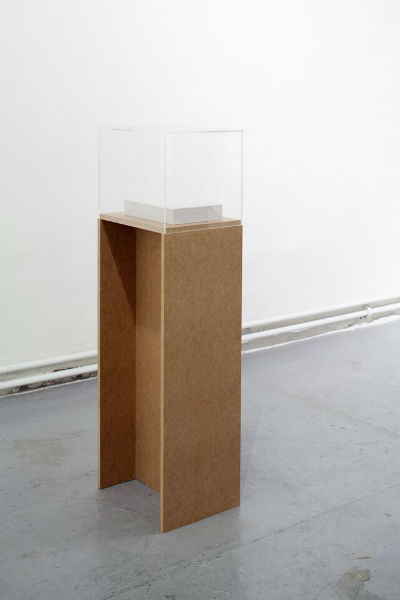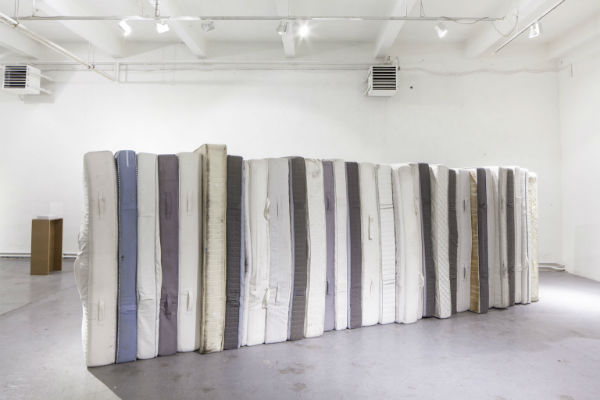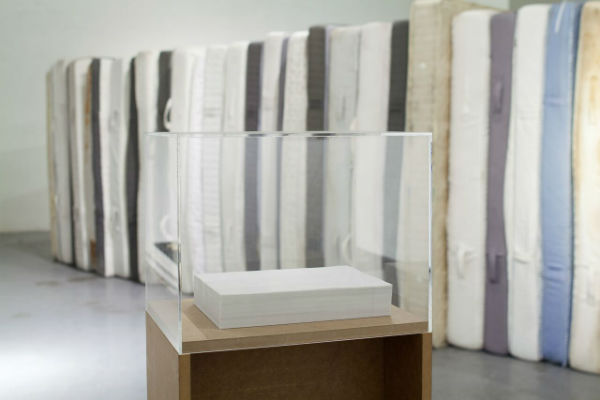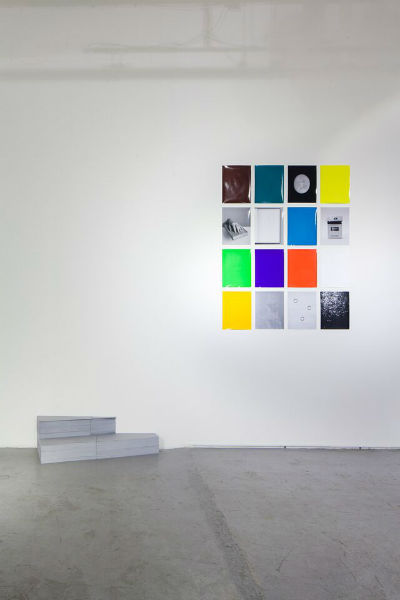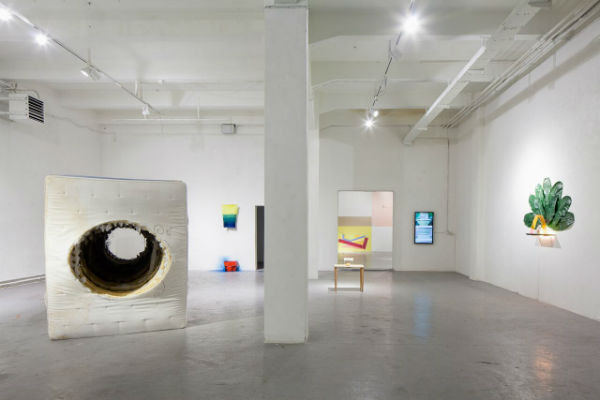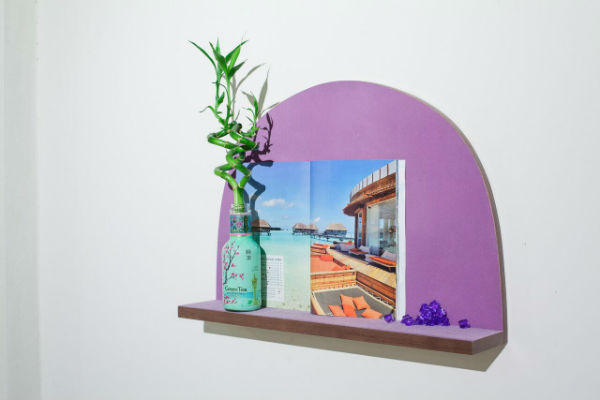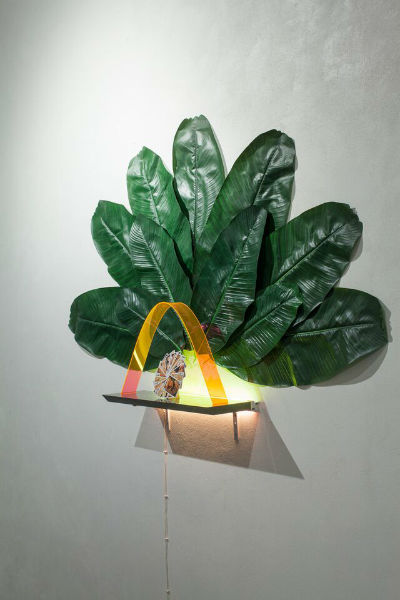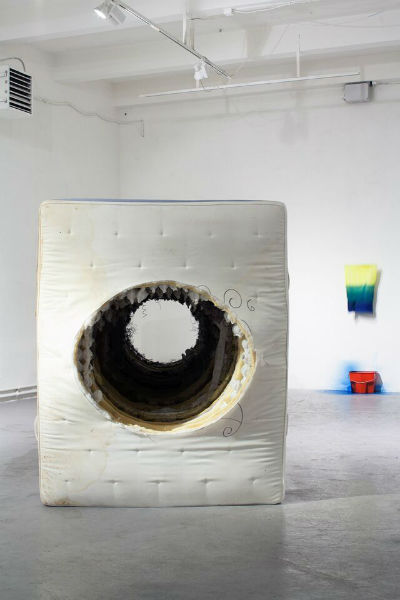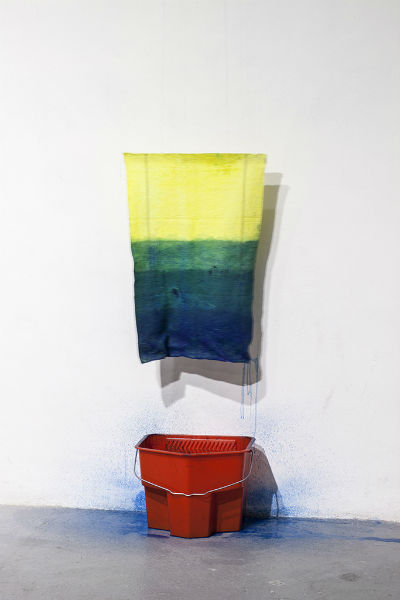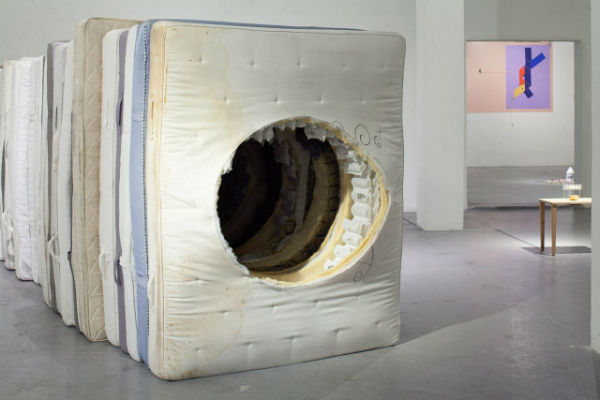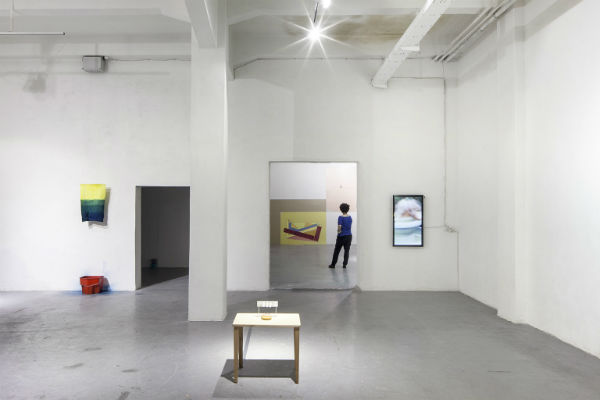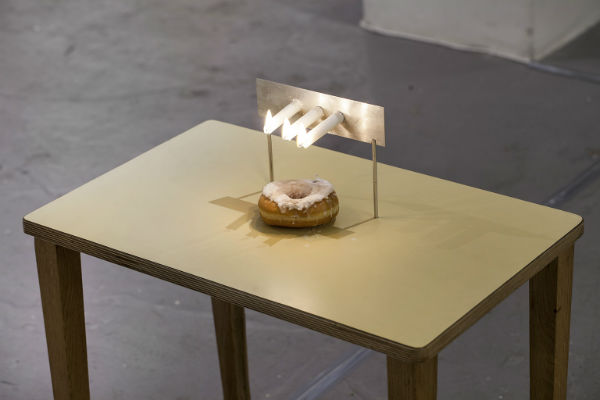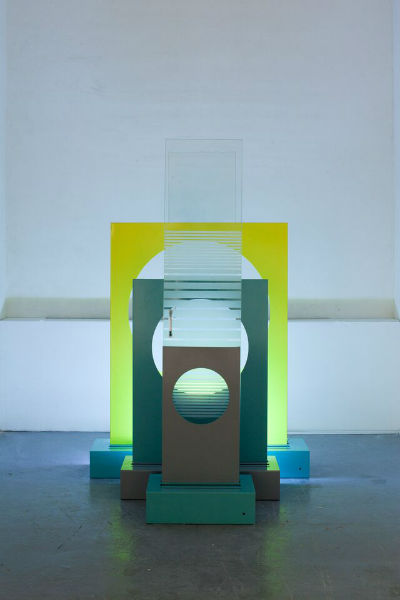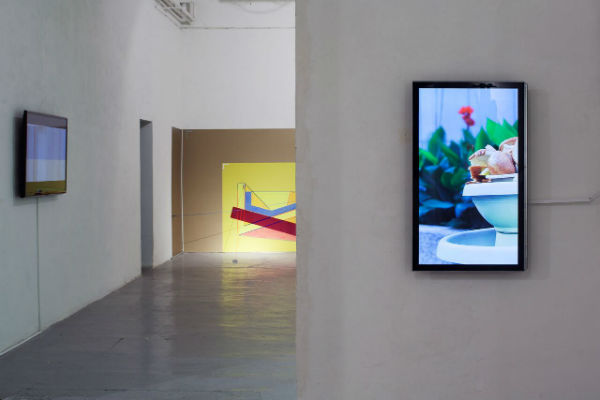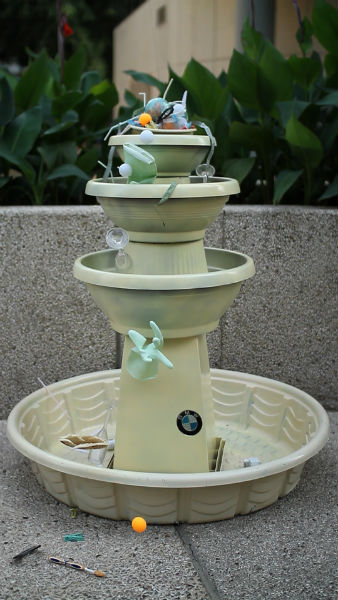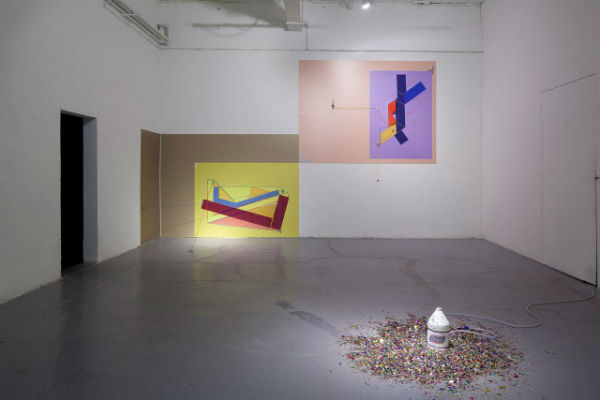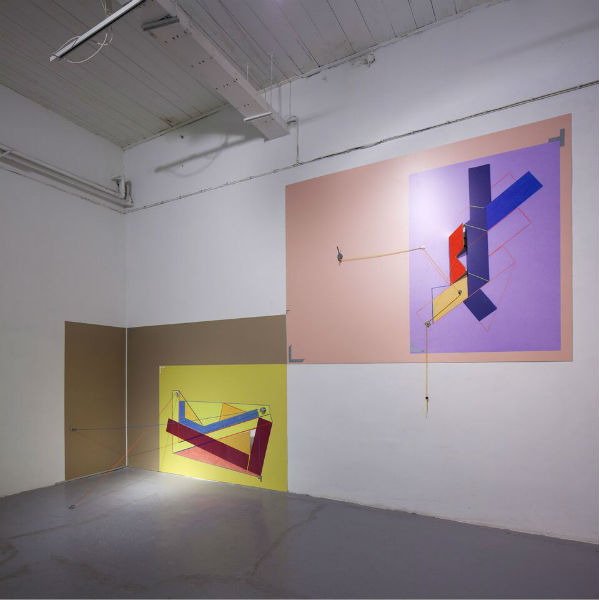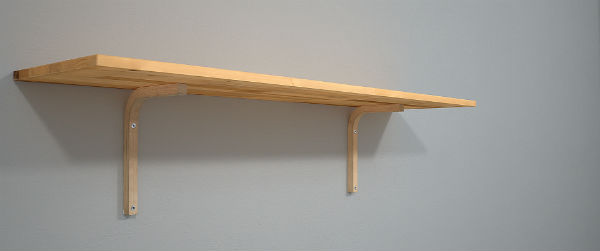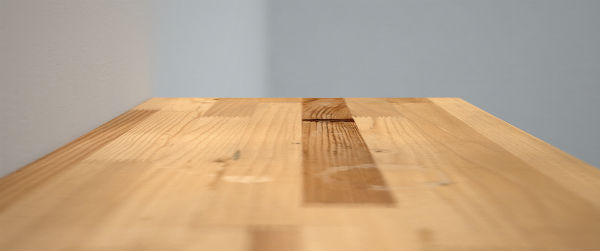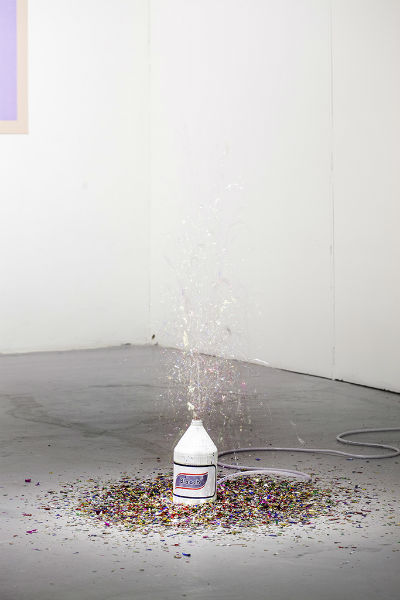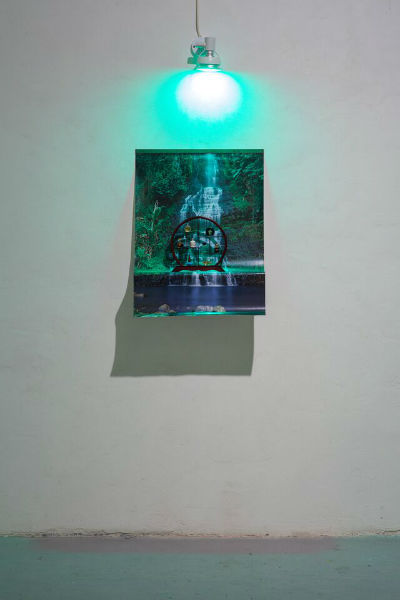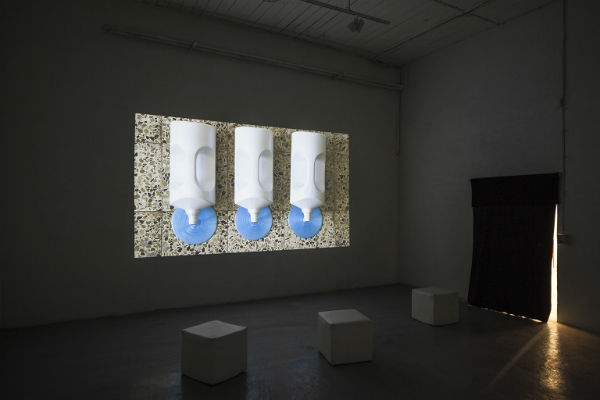Objectonomy: The economy of the objectonomy
MeetFactory, Praha 5, Prague,Czech Republic
September 3 – October 11, 2015
Artists: Sharon Balaban (IL), Jakub Geltner (CZ), Zac Hacmon (IL), Roy Menachem Markovich (IL), Jan Nálevka (CZ), Hila Toony Navok (IL), Rona Stern (IL), Adam Vačkář (CZ), Aleksandra Vajd & Hynek Alt (CZ), Roni Weiss (IL)
Massed-produced objects have been making their way into works of art ever since the early modernism of the twentieth century, acquiring a distinctive momentum to artistic production which they still carry to this day. From the initial assemblages of the cubists and the ready-mades of Marcel Duchamp to the pop art of the 1960’s and beyond, ordinary commodities have been continuously mined and tackled for their signifying potential, often seen as the ultimate symbol and derivative of capitalist culture in its various incarnations.The centennial to Duchamp’s ready-made, celebrated at a time of a post-capitalist influx, occasions a reexamination of the status and representation of everyday commodities in works of art. In the current neo-liberal climate, characterized by growing deregulation, social unrest and multinational corporations, it seems that mass-produced objects have come to embody a place beyond mere utilities, to virtually dominate our entire physical and mental landscape.
The exhibition Objectonomy seeks to examine several existing attitudes towards commodities in contemporary art as reflected through the works of 10 artists from Israel and the Czech Republic, all of whom are deeply engaged with this thematic. The works assembled here, in different media, incorporate and address objects of mass-produced origin in ways that manifest the sheer variety and ubiquity of manufactured goods in today’s consumerist world.
The works on view present an abundance of widely-available items drawn mostly from the realm of the home: from kitchen towels, bathroom accessories and plastic detergent bottles to processed foods, toys, clothing, cosmetics, electronics and more. By directing their focus at them, the works address society’s growing ambivalence with consumerism and material excess as phenomena that excite both fascination and distaste. The sarcastic and often whimsical tone allows them to engage critically with this ongoing obsession – an uneasy relationship where it is no longer clear who disposes of whom, the human subject or the inanimate object.
This uneasy love-hate relationship manifests itself through a dialectical mode of representation as regards the object, transforming it through various manipulations – whether overtly or implicitly – to yield a new and critically charged moment. This may take shape through a number of artistic strategies that range from sublimation to travesty and irony, still allowing, in between, for a personal tone to emerge, reflective of the memory and lived experience imbedded in material objects. Not eschewing artistic subjectivity, the works address the role of the artist within culture as an active agent who engages with the hyper-consumerist world of today.
From the mass-produced to the transcendental
In many of the works on view, the transformations that are applied to objects suggest a solemn and minimal vocabulary meant to evoke the spheres of the sublime. Marked by their formal rigidity and ritualistic procedures, these works address the physical parameters of color, size, shape and texture in order to highlight essential aesthetic values, recruiting the sensorial-perceptual to transcend the physical and bring about something of a spiritual revelation.
A video by Sharon Balaban, Untitled (2014) shows three identical plastic bottles laid out flat on a floor in perfect alignment. At a certain point the bottles begin to emit their contents in unison, and blue baby liquid soap begins to poor out in a slow, synchronized motion. The measured progression generates heightened anticipation in the viewer, translating what is essentially a meaningless occurrence into a charged, dramatic moment whose calculated yet sensual beauty summons the erotic.
Origins (Rising) (2013), an installation by Hila Toony Navook, likewise applies a formal yet playful rigidity to the elements it works with. Three aluminum stands of varying colors are installed one after the other in ascending order to form a converging axis. Each stand supports a glass panel – in fact, shower screens decorated with geometrical motifs. The juxtaposition of glass panels, colors and shapes creates a geometric interplay that clearly references abstract art, while a hidden system of changing lights evokes the awe-inspiring solemnity of an altar.
Another work of Navook’s, Drawing Site (2015), can be seen high up at the corner of one of the gallery walls. Large sheets printed with an abstract-geometrical pattern are mounted with an assortment of ready-made objects, an arrangement that brings to mind a religious diptych or a relief. Based on smaller drawings by the artist, the large printouts and mounted objects explore notions of form, objecthood and space as well as the dynamics of abstract and concretized, freeing the formalist vocabulary from its ties to visual representation.
A formalistic strategy geared at spiritual exaltation is at work also in Jakub Geltner’s The Bookshelf: A Study (2015), which comprises a ready-made and a video. A standard wooden Ikea shelf greets visitors at the entrance to the show, while inside they encounter a high-end digital reconstruction of the same shelf in animated form. With formalist vocabulary as his starting point, Geltner attempts an in-depth examination of a given object across two instances – the actual object and its virtual rendering, contrasting the unassuming bareness of the former with the rich cinematic reconstruction of the latter. Based on a close inspection of actual physical properties, the video imparts a seductive representation of the real, designating technology as an active agent in achieving transcendence.
Religious connotations of worship and devotion are made all the more explicit in a work by Roni Weiss, America Runs on Donuts (2014). A time-based installation, the work centers on the eponymous all-American pastry, only that here instead of the customary sugar coating the donut receives its final glazing from a number of candles propped above it and dripping their wax below – a systematic procedure that, in theory, could go on forever, so long as new candles are brought in to replace the old. The mechanism at work here seems to suggest that the donut, once thoroughly embalmed in wax, proceeds to its apotheosis – an eternal life endowed by the spiritual aura of the candles.
Jan Nálevka’s Gate of Harmony (2015) presents us with what looks like a standard unit of 500 A4 printing sheets. The neat pile, placed on a pedestal and incased in glass, is in fact a 1:1 replica, a highly accurate 3D-print produced using an advanced printing and scanning technology to approximate the original as much as possible. Nálevka turns what was originally a printing material into the end-product of a new printing process – a transformative gesture that, while giving way to something between a hyper-realist sculpture and a minimalist exhibit in white, deems the pages to remain blank forever. Thus robbed of their functionality, the pages are consecrated anew and placed on a pedestal, elevated from their former status of stationary item to a higher order – as is also suggested by the title, a reference to the famed “golden ratio.”
Three assemblages by Rona Stern continue to echo the ritualistic gesture through seductive arrangements of found objects. Drawing on the shiny imagery of stock photography and marketing strategies, Stern’s ornate wall fixtures bring to mind the small domestic shrines of Far-Eastern cultures, offering a reflection on the unbridgeable gap between pre-packaged fantasies and down-to-earth reality. Stern works with found materials and images that she recruits from her close surrounding, using these to offer a behind-the-scenes look at the visual language of brochures, tables and diagrams. Taking these to their extreme, the mini-shrines seem to ask what is to remain in the wake of the ongoing pursuit of material goods and constant gratification.
Her Name is Lola (2013), the first of these, presents itself as a glowing bubble of Far-Eastern exoticism. A series of playing cards with nude pictures are spread in a circular fan – a shape that is echoed from above by a circular arrangement of lush banana leaves. The arrangement is meant to channel a cheap erotic fantasy of faraway places where all is ostensibly available and permitted. The erotic cards, made in China and featuring dated images of East-European women, to be finally sold in the backstreets of downtown Tel Aviv, are represented here in a way as to unmask the absurd trajectories of global capitalism.
Another shrine-like composition of Stern’s, Paradise Lost (2013), goes on to enhance this absurdity through a poster image of a natural water cascade combined with a miniature deco-style wooden cabinet holding sample-size perfume bottles. A green light floods the image from above, highlighting the lush hues of the dainty tableau. The work reflects on the lure of the artificial that has come to replace the real, as well as on the constant influx of images that surround us, dictating one how to feel and behave, and above what to buy in order to conform to ideals of beauty and desirability.
I'm Currently Out of Office (2014), a third work of Stern’s in the show, formulates an escape route from the daily routine through an assortment of objects suggestive of a dream vacation in a faraway destination. The shelf arrangement, which includes a shiny magazine spread and a mass-market – if beautifully ornate – drink bottle, opposes the seductive holiday on offer, often considered as the highlight of the capitalist work-holiday cycle, with a reality where such escapism is largely out of reach.
Parody and ridicule as critical tools
As seen in the works of Rona Stern, the critique of consumerism addresses not only the brainwashing effect of advertisement and the cult of commodities, but also the false gratification it offers as a substitute for real needs. A similar critique is inherent in a video by Roy Menachem Markovich, Fountain of Things (2014), yet here the tone shifts from the devotional to the comedic. The video features a cheap-looking plastic fountain that belches out an ongoing stream of worthless household utilities. This torrent of junk, made of objects found virtually in every home, overflows to pollute the fountain’s surrounding. Located at the center of a generic-looking shopping plaza, the plastic fountain offers itself as a monument to the unbreakable cycle of consumerism, voicing a critique on the empty promises of material belongings.
Two further pieces by Roni Weiss in the show operate on the same register, subverting the most basic of household appliances to comedic effect. As with the above mentioned America Runs on Donuts, the commonplace is transformed into mechanically-operated automatons capable of performing spectacular tasks. Thus removed from their original functionality, these newly assigned objects expose the cult of commodities in its absurdity.
In Painting Machine (2014), a simple wiping rag is being mechanically lifted from a plastic bucket containing red paint. Dripping paint as it is raised to reach the gallery ceiling, the rectangular rag inevitably stains the adjacent wall on its way up, also revealing the full breadths of its multicolored stains – a rainbow of colors left from previous actions. The slow and measured lifting of the rag recalls flag raisings as performed in ceremonious functions, contrasting the realms of the elevated and the mundane.
Another mechanically operated procedure of Weiss’s is Bleach (2014), where a large detergent bottle is connected to an electrical device that, upon operation, makes the bottle emit occasional outbursts of multicolored confetti. The universally recognizable bottle of liquid bleach, which connotes both cleanliness and the harsh corrosive properties of its active chemical agents, is transformed into an anarchic celebration joyfully exploding in the face of social convention.
The object as memento
Away from the humor and sarcasm as seen above, others works in the exhibition explore the deep personal and sentimental dimension attributed to some objects, whatever their provenance. Various theories have been advanced to explain such strong emotional attachment to the inanimate, from anthropology and Marxist theory to psychology. Psychologist Donald W. Winnicott, in his theory of the transitional object, explains the emotional investment in objects as observed during the early stages of childhood by the gradual separation from the mother, whom the child initially experiences as an inseparable part of him or her. At that point, objects such as a blanket or a stuffed animal become indispensible as a source of comfort, to compensate for the growing absence of the mother.
In other circumstances, objects can become emotionally charged by containing the traces of memories and former lives. This is seen in Take Me Back (2015), a large-scale sculptural piece by Zac Hacmon, where tens of used mattresses are held upright and tightly stacked together. Commanding a monumental presence, this mass of used mattresses was violently drilled in the middle to dig a hole large enough for a person. The tunnel-like cavity runs throughout the mattresses, offering what looks like a clandestine escape route or a hiding place – if it weren’t for the jagged wiring of the mattresses’ entrails, which strongly forbid any such entry. No longer allowing for sleep and repose, this gloomy, sizable stack harks to personal hardship and political predicament, from a relationship breakup to an overnight escape. An ongoing project, Take Me Back was originally shown in the Haifa Museum of Art, in Israel, and was recreated here using locally-found mattresses that the artist picked up during his residency at MeetFactory.
A strong personal dimension is likewise present in a piece by Adam Vačkář, Untitled (2015), a series of clay reproductions of dated audiovisual equipment originally belonging to his grandparents, among them a camera, a Dictaphone and a tape recorder. The objects, originally intended for recording voice and image for perpetuity, are now captured and perpetuated in their turn, hardened as it were to become mementos of lost times and dated technologies. The transformative action applied to theses means of mechanical reproduction calls to mind the famous essay by Walter Benjamin, yet here the same process as traced by Benjamin is reversed, with the equipment previously used for a repeated, mechanical reproduction being turned into unique artifacts.
A cluster of black-and-white photographs along with a sculptural element make up Two Steps (2015), an installation by Aleksandra Vajd and Hynek Alt. The photographs, hung on the wall in an arbitrary-like manner, feature a set of loosely connected sights and objects, from insignificant personal belongings to a cryptic abstract pattern – an enigmatic juxtaposition of things that may allude to the whereabouts and circumstances of an individual story. By their eclectic size and origin – among them analog and digital prints, ink jet and silver gelatin – the accumulated images also suggest a secretive exchange between the two parties involved, something of a furtive dialogue in images. Below them, a sculptural object made of color photographic prints assimilates itself into the actual gallery space through a play of optical illusion, drawing the viewers in to immerse them further in the enigmatic cluster hung above.
Aesthetics of under-valuation
Directing their focus at minor objects and situations, the works featured here unfold their visual and conceptual vocabulary to explore notions of the commodity in today’s mass-produced world. In line with a strong tendency in contemporary art-making, the participating artists opt for a pared-down aesthetic and understated, if sometimes comical, gestures, addressing the overwhelming availability of manufactured objects as well as its underlying socio-political setup. With mostly minimal interventions, rudimentary means and manifestly low production costs, they apply simple yet clever manipulations to these items as objects of admiration mixed with antagonism. The pared-down presentation seems to oppose the over-valuation assigned to objects of manufactured origin, offering instead their own whimsical and critical take on this massive phenomenon of today’s reality.
Curator: Sally Haftel Naveh/forums/culture/11777.htm
English editor: Hemda Rosenbaum /forums/culture/11777
The Bookshelf: A Study (2015) from telekuba on Vimeo.
https://youtu.be/5n5WBP0gYWo
